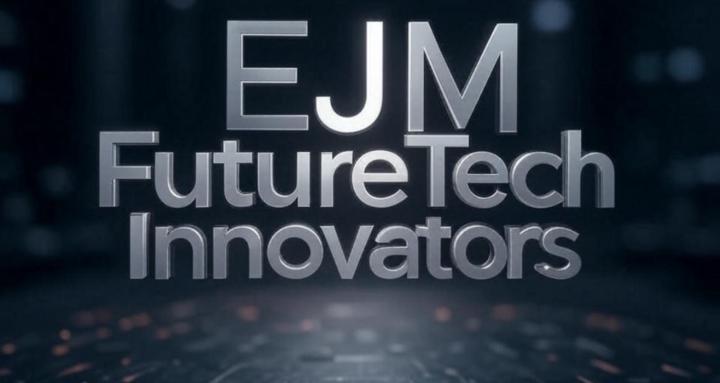
Write something
Trivia time tech style!!
🚀 Tech Trivia Time! 💾 Calling all tech enthusiasts at EJM FutureTech Innovators! Test your knowledge with this throwback question from the early days of computing: ❓ Question: What was the first computer virus released in the wild called? Want to geek out with more tech trivia? Stay tuned for more trivia. And lots more to come. 💯👍 hope everyone is doing good this morning. 🙏
0
0

Another Driven week of creation
Good morning, everyone! How’s everyone doing this Monday morning? Hope you all had a restful weekend and are feeling ready to take on the week ahead. Would love to hear how things are going with you—any exciting plans or just easing into the day? Let’s kick off this Monday with some positive vibes! 😊🙏💯
2
0
Maximizing Impact, Minimizing Expense: Smart Prompt Engineering and Cost-Effective Strategies for API-Driven LLMs
Prompt Engineering Patterns and Cost-Management Strategies for API-Based LLMs As large language models (LLMs) become increasingly accessible through API services like OpenAI, Anthropic, and others, businesses and developers face the twin challenges of designing effective prompts and managing the costs that come with high API usage. In this post, we’ll explore common prompt engineering patterns to maximize output quality and share practical strategies to keep API expenses under control without sacrificing performance. Understanding the Cost Structure of API-Based LLMs Before diving into prompt engineering, it’s essential to grasp how API providers typically charge for LLM usage: - Token-based pricing: Most providers charge based on tokens processed, which includes both input tokens (your prompt) and output tokens (the model’s response). More tokens equal higher costs. - Model selection:Larger, more capable models (e.g., GPT-4) are more expensive per token than smaller models (e.g., GPT-3.5). - Request frequency: Frequent or real-time API calls increase total spend. Keeping these factors in mind informs smart prompt design and usage patterns. Prompt Engineering Patterns to Optimize Performance and Cost 1. Prompt Compression Craft concise yet clear prompts that reduce token count without sacrificing context. Minimizing input tokens lowers cost and can improve latency. - Use placeholders or short references for repeated concepts. - Avoid unnecessary verbosity. - Employ tokens-efficient formatting (e.g., bullet points rather than paragraphs). 2. Progressive Prompting Break complex tasks into smaller, staged prompts rather than one large request. Example: - Step 1: Summarize key points from a document. - Step 2: Generate questions based on the summary. - Step 3: Create detailed answers. This reduces token overload per request and lets you reuse intermediate outputs. 3. Few-Shot Learning with Exemplars Include a limited number of high-quality examples in your prompt to steer the model’s output.
2
0
Designing a Real-Time Messaging Layer: WebSocket vs WebRTC vs SSE
When building a real-time messaging system, choosing the right technology is crucial. The three primary contenders—WebSocket, WebRTC, and Server-Sent Events (SSE)—each have unique strengths and specific use cases. Here’s a confident breakdown to guide your decision: WebSocket: The All-Rounder WebSocket offers full-duplex communication over a single TCP connection, making it perfect for bidirectional real-time messaging. It’s widely supported and ideal when you need instant, low-latency interactions like chat apps, live updates, or gaming. WebRTC: Peer-to-Peer Powerhouse WebRTC shines when you require peer-to-peer communication with minimal latency. Beyond messaging, it supports audio, video, and file transfer without routing through a server, reducing server load and improving privacy. Prefer WebRTC for rich media applications or decentralized messaging. Server-Sent Events (SSE): Simplicity Meets Scale SSE provides a straightforward, server-to-client one-way communication channel over HTTP. It’s perfect for sending continuous updates like news feeds or notifications. While it lacks bidirectional capabilities, SSE is easy to implement and works seamlessly with HTTP/2 for efficient streaming. Bottom Line Choose WebSocket for robust, bidirectional messaging; WebRTC for peer-to-peer media and messaging; and SSE for simple, server-driven event streams. Align your choice with your app’s interaction pattern and scalability needs—there’s no one-size-fits-all, but there is a best fit for your real-time messaging layer.
3
0
Good morning everyone
Good morning to all the innovators! Today is another opportunity to turn your ideas into reality. Embrace the challenges ahead as stepping stones to your growth. Remember, every great achievement starts with the courage to begin. Trust in your abilities, stay curious, and let your passion guide you. You have the power to create, inspire, and make a difference. Let's make today count!
2
0

1-30 of 82

skool.com/ejm-futuretech-23484
Community to grow in technology solutions and discussions in all areas of industries but not just discussions also consulting!!!!
Powered by





